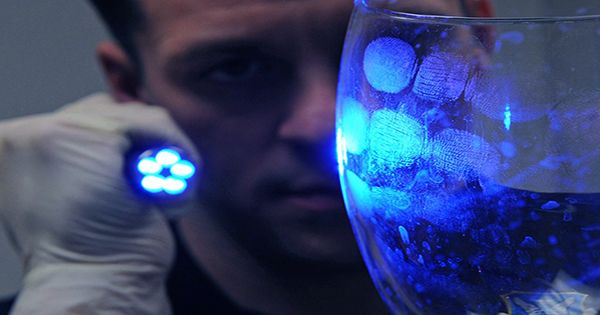Police forces around the world have been using fingerprints to locate suspects at crime scenes for more than a century. Recently, DNA has been added to that mixture. In most cases, however, fingerprints are pushed or hidden without any gloves, and DNA may not be identifiable.
In this case, someone’s sweat may reveal their presence. You may not like to think about it but there are 100 sweat glands per centimeter per square centimeter of skin (650 per square inch) even if the lands are not particularly hot and irritated, people leave sweat on anything they touch.
Dr. Jan Halámek of the University of Albany said in a statement, “Each of our skin secretions is different and therefore unique to us. Like a fingerprint.” Our sweat contains an array of amino acids and metabolites. Although common to most all humans, the concentration of each is different, so that a sample is quite distinct. In analytical chemistry, Halámek describes an attempt to see if only three metabolic concentrations could be used to identify a person.
If you are uncomfortable with the idea of sweating everywhere, you may want to move on now, but one of the metabolites measured in Halámek is urea, the main ingredient in urine. The other two were lactate and glutamate. The volunteers collected 25 samples from the nozzle and another 25 artificially produced Halámeks showed that it was possible to separate each sample based on the concentration of the metabolism.
Halámek said, “Currently investigators tend to ignore the presence of sweat on the crime scene. Our paper has proof that it’s worth it.” “Without adequate DNA evidence, which can be analyzed in days or weeks, it is difficult to determine how many people were present at the crime scene. We can collect data quickly.” Metabolic analysis, Halámek told IFLScience, can only take 30-40 seconds.
There is still a long way to go before this tool can appear in the arsenal of forensic teams. Halámek told IFLScience that his team is working to overcome the challenge of “mixed sweat samples,” where two or more people have touched the same surface.
Moreover, metabolic concentrations do not reflect a person’s genes just like a fingerprint. Diet, health, and recent exercise alter metabolic concentrations. So to keep a profile in the file, as is done with the DNA of strong-willed people – to track how one’s sweat changes overtime – at the very least – requires multiple records. Even without it, a sweat sample can reveal someone’s gender and approximate age.
Halámek has previously proposed using sweat recognition for authentication to access electronic devices. He argues that imitating someone’s sweat profile is harder than creating a mold of their fingerprints to gain inappropriate access for them.















